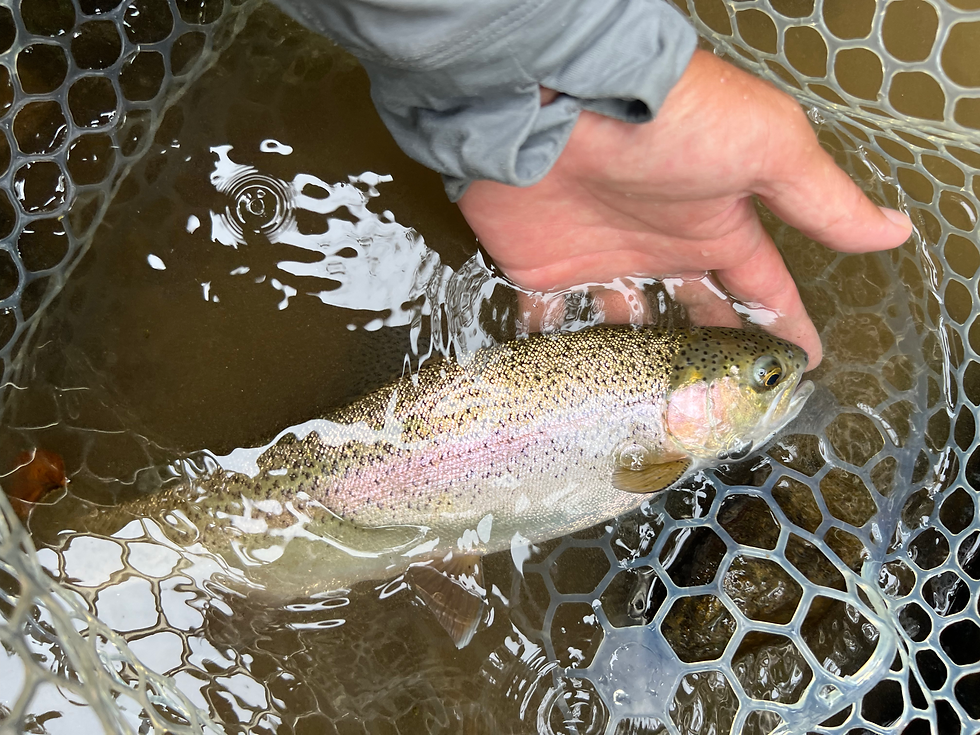Do trout feel pain?
- The Trout Bandit

- Sep 7, 2025
- 3 min read

In a previous blog inspired by a Tom Rosenbauer podcast, I explored the trout’s ability to see, hear and smell. This podcast featured an interview with a Stanford neurologist, Dr. Russ Carpenter, whose study of the brain and senses of trout make him a compelling authority.
My takeaway from the interview was that fish have acute sensory capacity. There is no doubt they can see well if they can zero in on a size 22 dry fly or nymph. And I am pretty sure that the reactionary strike at an insect hitting the water is prompted as much by the sound as by the vibration or disturbance of the surface. The neurologist appearing on the podcast also asserts that trout are accustomed to how water carries sound and are in tune to it.

A trout’s sense of smell is also acute. Dr. Carpenter highlights that pheromones play a role in their lives through scent – and employ them to mediate social behaviors. The effectiveness of Berkley Powerbait is more than bright colors, it is also the scent. This suggests that fish will pick up on unnatural scents in their habitat, which is why I avoid getting bug spray or sunblock on my hands to reduce the risk of either being transmitted to the leader or fly line.
So, I was not surprised to learn from a recent study that fish suffer almost instantly after being pulled from the water. If their sensory capacity is that sharp, how can they not suffer when removed from their habitat. According to the study, as reported in Science Alert, “Just five seconds of air exposure triggers a neurochemical response we might associate with negative emotions in ourselves. Behaviors such as vigorous twisting and turning further demonstrate an intense aversion reaction.”
Additionally, and without water, the delicate gill structures that exchange oxygen for carbon dioxide stick together, causing carbon dioxide from respiration to accumulate, which after a
short period results in extreme pain and, ultimately, unconsciousness. So, the sensation of extreme pain causes them to black out, or faint, which is also, not surprising. Many humans would do the same if deprived of oxygen.

My evolution as a fly angler who predominately targets trout has included a considerable amount of reflection on how I can be more conservation minded. To begin with, I rarely keep fish. I also increasingly limit the photo opportunities to shots of the fish in a watery net. I am not going to say that I do not relish the trophy shots, but I keep the fish in the water and, after wetting my hands, lift it out of the watery net for a quick shot.
I also have become increasingly protective of my favorite target – the brook trout of Shenandoah National Park (SNP). I will not fish in summer, when water levels are low and temperatures are high (as oxygen levels will be low). I also will not fish the SNP streams while the fish are spawning in late fall and winter. Brook trout will be easily stressed in both these situations, which could result in a higher propensity for mortality after release.

I am not suggesting I am perfect in my conservation efforts relating to trout fishing, but I am learning and trying to do the right things. After all, this is a pastime that I cherish, which would not be as rewarding if I did not work to protect the ecosystem and the trout. I expect I will continue to evolve and facilitate better conditions for my angling collaborators.




Comments